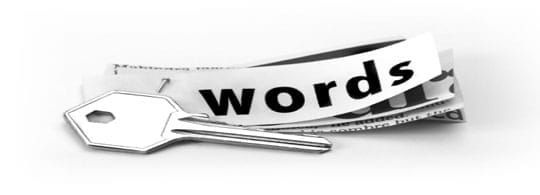Is your site not showing up in Google search engine results? If you have decided to focus on SEO for primary traffic strategy, you should do everything to optimize it for popular search engines. Google, Yahoo, and Bing are the popular search engines from where you can get thousands of visitors per day. However, if you don’t do SEO in a right way — your site will not rank on search engines despite spending a lot of time and money on SEO.
In this post, I will help you understand the reasons why your site is not ranking even after optimizing for search engines. If you can fix those issues, your site can rank high on Google and other reputed search engines.
Before we jump into this, let’s understand why your site is not shown in Google search engine results. There are several reasons why your site might not have shown up in search engine result pages, some of which are as below:
1) Your site has not been indexed yet by search engines
 Sometimes, it takes a bit more time for search engines to index your site. This could be because your website is new and hardly has any inbound links. Once the website is crawled by search engines, it should be in the index.
Sometimes, it takes a bit more time for search engines to index your site. This could be because your website is new and hardly has any inbound links. Once the website is crawled by search engines, it should be in the index.
Submitting your website to search engines is a good way to speed up the process of driving traffic to a website, you can add your URL to Google through the link – https://www.google.com/webmasters/tools/submit-url.
2) Your site is not optimized for search engine crawling
 Once you submit your site to search engines, they send a spider to crawl across the website. These spiders scan the meta content, keywords and other things to make sure that your website is optimized for search engines. You need to consider what content the search engines see on the web pages when crawling across.
Once you submit your site to search engines, they send a spider to crawl across the website. These spiders scan the meta content, keywords and other things to make sure that your website is optimized for search engines. You need to consider what content the search engines see on the web pages when crawling across.
Once the search engines index your website, you should take look at the content of your site. Take a look at the page content of your website because search engine might not list your site if the content of your site is low quality. Also, you need to make sure there is no server or DNS problem.

3) Too much of images and graphics
 Though images, videos, and animations can be stunning, they might turn your website into a visual work of art. Very few search engines understand Flash-embedded page elements such as links and texts that are invisible to many visiting spiders. In short, heavy flash animated pages will not attract search engines, and there is no sense in submitting them.
Though images, videos, and animations can be stunning, they might turn your website into a visual work of art. Very few search engines understand Flash-embedded page elements such as links and texts that are invisible to many visiting spiders. In short, heavy flash animated pages will not attract search engines, and there is no sense in submitting them.
The search robots cannot scan the text displayed in Flash movies and images. Avoid using text with graphics. You can still achieve good ranking by optimizing the site content and Meta tags with flash animated pages. Using flash images on site is perfectly fine, as long as they are not contained in the entire site’s content.
4) Underestimating the keyword market
 Being an experienced SEO consultant, I know how competitive the keyword market is. Search engines help millions of people across the internet find specific content using keywords and phrases. It is highly important for webmasters to target less competitive keyword market so that they can gain the attention of your customers. Remember that through your site is in the results of search engine query — it is going to get lost in the shuffle, if the keywords are too general, so focus on long tail keywords.
Being an experienced SEO consultant, I know how competitive the keyword market is. Search engines help millions of people across the internet find specific content using keywords and phrases. It is highly important for webmasters to target less competitive keyword market so that they can gain the attention of your customers. Remember that through your site is in the results of search engine query — it is going to get lost in the shuffle, if the keywords are too general, so focus on long tail keywords.
It is best to be as specific as possible, rather than going for generic keywords and phrases. Generic keywords will take a lot of time to bring traffic to your site. For example, if a web designer may not get listed if he included the key phrase “web designing” in the content. He should use phrases like – “web designing services in Los Angeles”, “Web designing services for realtors”, “web designing services at affordable rates” and so on — to rank high on search engines.
You should optimize your website for medium and high competitive keywords as it gains authority.

5) You don’t have enough inbound links
 It is very important to have a healthy inbound link profile to get your site rank high in search engines. Now, you might ask – what does healthy mean? Healthy inbound links are nothing but natural links from high quality, relevant and authority sites. Your website should have a sufficient number of quality deep links with the appropriate relationship between sites. If your site is not linked to any other site, reputed search engines like Google, Yahoo and Bing may not even bother to visit your website.
It is very important to have a healthy inbound link profile to get your site rank high in search engines. Now, you might ask – what does healthy mean? Healthy inbound links are nothing but natural links from high quality, relevant and authority sites. Your website should have a sufficient number of quality deep links with the appropriate relationship between sites. If your site is not linked to any other site, reputed search engines like Google, Yahoo and Bing may not even bother to visit your website.
You can not accomplish your SEO goals, by just having tons of links. The quality of links is much important than quantity. Those links have to be relevant to your business, content, and audience. The most difficult link to get is an inbound link, especially the one that comes from industry website.
If you want to build better inbound links, you should groom your profiles, review industry products, publish articles online, comment on others blogs and do many more.
The key is to implement single link building strategy at one time. Choose the best link building strategy to build inbound links and take consistent action.
You may also like: 5 Ways to Build Quality Backlinks to Boost Rankings.
6) You haven’t built up trust with reputed search engines
 Search engines like Google de-index your website, if you fail to build trust. Many online marketers make the mistake of doing “over-optimization” of links. Since the release of Penguin algorithm, it has become harder for sites that attempt to game the system manually and build keyword rich links manually.
Search engines like Google de-index your website, if you fail to build trust. Many online marketers make the mistake of doing “over-optimization” of links. Since the release of Penguin algorithm, it has become harder for sites that attempt to game the system manually and build keyword rich links manually.
Over-optimization is certainly something that should be avoided. There is solid evidence that sites with over-optimized anchor links and anchor text can be penalized.
7) Your site is not mobile responsive
 We all know that today’s world is highly influenced by smart devices. Whether it smartphone or tablet, people use for browsing purpose. People are no more interested in sung desktop and laptops to find some information. They want things to be done at the fingertips. The usability of smart devices has become a significant ranking factor, after the release of “Mobilegeddon” algorithm.
We all know that today’s world is highly influenced by smart devices. Whether it smartphone or tablet, people use for browsing purpose. People are no more interested in sung desktop and laptops to find some information. They want things to be done at the fingertips. The usability of smart devices has become a significant ranking factor, after the release of “Mobilegeddon” algorithm.
If you have experienced any drop in traffic, there is a good chance that your website is not optimized for mobile users. The best way to make sure that your website ranks high on Google is making it mobile responsive. This will ensure that your site performs well on devices of different screen sizes. Not only this, it will provide a better user experience for all the users.
You can conduct a mobile-friendly test to check your site is mobile friendly or not. Use PageSpeed Insights Tool to ensure that your website loads quickly on all the devices.

8) Google has removed your website for some reasons
 Google removes some sites temporarily from its search results due to some reasons. If your website does not meet the quality guidelines of Google, it is obligated to do so. For example – if the content of your site detracts the user’s ability to find relevant information, Google removes your website. Some of the ways to remove your site from search engine results are as below:
Google removes some sites temporarily from its search results due to some reasons. If your website does not meet the quality guidelines of Google, it is obligated to do so. For example – if the content of your site detracts the user’s ability to find relevant information, Google removes your website. Some of the ways to remove your site from search engine results are as below:
- Penalized: When Google penalizes the website, the domain and page exist — but none of the pages can be found through direct search queries. The penalty can be applied manually by Google Quality Engineer as well as by Google algorithm.
- Deindexed: When Google completely bans a website, it de-indexes the website.
Google may alert you using Google Search Console if your site has been blocked or removed for some reasons. If you receive any notification regarding violation of quality guidelines, you can modify the site and/or backlinks to meet the guidelines. If your site has been hit by a manual or algorithmic penalty, you will notice a sudden drop in ranking and traffic.
You may like: 12 Great Tips to Make Google to Quickly Index Your New Website.
What should you do?

Well, you have optimized your web pages with delightful title tags, Meta descriptions, keywords, content, backlink and other related things. Despite doing all these, if your site is not still ranking — it is very frustrating. Here, I am going to show you how you can discover where the mistake is and how to drive traffic to your site.
Check if your site is indexed
First of all, you should put a quick call to Google. You can simply put a call by running a search operator like:
- site:yourfabsite.com
- site:yourfabsite.com/blog
If the search results are something like – “Your search site:yourfabsite.com did not match any documents, it means your site isn’t indexed. It got to be indexed before it can rank.
Go and set up your Search Console. Once everything is set and verified, you can use Google Webmaster tools to submit your website URL. If the site is not found indexed there, you can take a closer look at the robots.txt file.

Find out the rank of your website
Once your pages have been crawled and indexed, the next step is to find your rankings manually. You can do this by searching Google for your brand name, keywords, and phrases that are used on your website. If you are not finding your site on the first page, there is something seriously wrong with the SEO of your website.
Be like a good detective and record the keyword, position and URL in the spreadsheet for Future. However, a manual search is not that easy. Moreover, it is a time taking procedure and you may not find what actually you are looking for.
You can use some of the best SEO tools if you want to take a break from manual search. Plug the keywords you are using directly into Keyword Explorer. Check out where you are ranking for your target keywords and which keyword is ranking — your position over time. Check if any keywords have dropped down in ranking with time.
Tracking the ranking of your website is very important to understand why you are not performing as expected.
Recommended for you: SEO Lesson: How to Get Found on the Web in 3 Easy Steps.
Ensure that your content is ‘THE BEST’
Check if the content of your website is up-to-date and is best in terms of quality and originality. I don’t advise you to make changes to the content every now and then. Even the best search engine like Google needs time to register the updates. If you feel like the content is too dusty and you are lagging behind your competitors, you should check the content and keep it in place.

You should also check the content from a “Bot’s View”, instead of a visitor. You can do this in an easy way by right clicking on Chrome or Firefox and view the source. Make sure the source code has proper title tags and meta description.
It might be a stumbling block for beginners to check the source code. If you want to do productive page optimization, follow the basics of on-page optimization.
- The title tag should be 55 characters and is relevant to the content.
- The meta description should be about 155 characters and influence the clicks.
- Check the whole site regularly to make sure that you haven’t skipped any tags.
It’s time to look at the suggestions to see how you can improve your on-page optimization.
Conclusion

I hope this post gave you some insights into why your site is not ranking even after optimizing it for search engines. There are many other reasons you may be experiencing problems.
Have you been able to pinpoint why your site is not ranking in organic search results? Share your experience below!
This article is written by Akash Srivastava, a Freelance SEO Consultant. He helps people create or revise their SEO plan, implement it and monitors results. He regularly writes about SEO and has been in this since 2011. In his spare time, he read books. You can hire him for the consultation only or to do everything.




